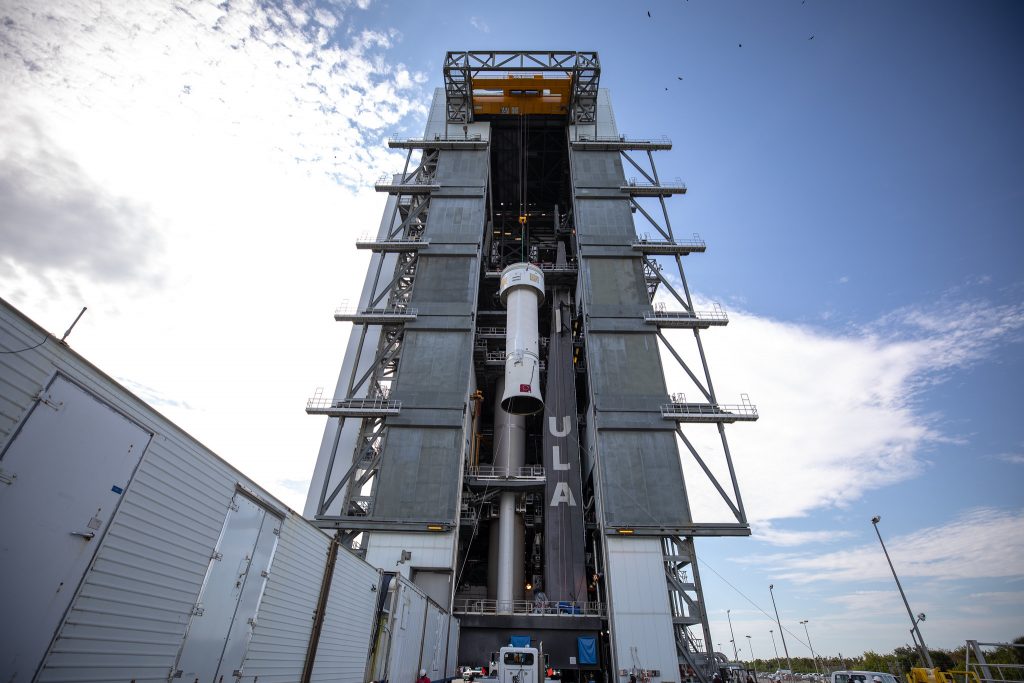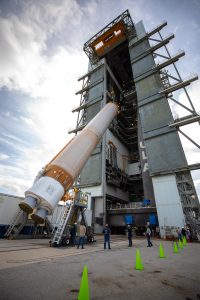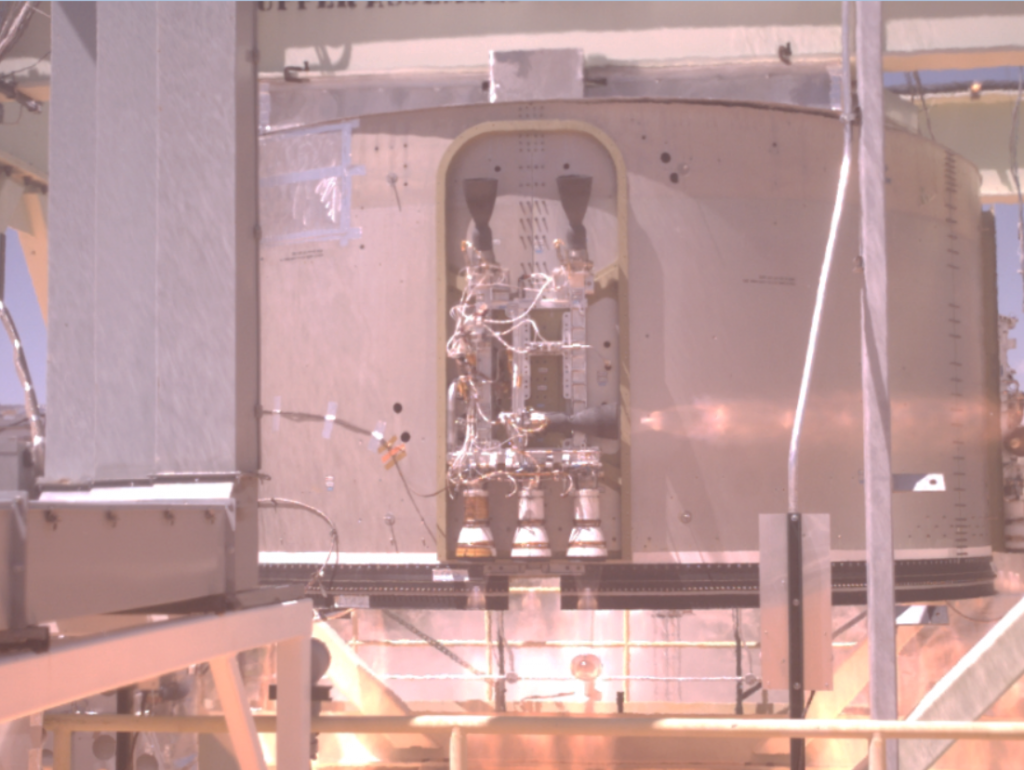
The United Launch Alliance (ULA) Atlas V rocket set to launch Boeing’s CST-100 Starliner on its maiden voyage to the International Space Station for NASA’s Commercial Crew Program is ready for the mating of Starliner to the top of the launch vehicle.

On Monday, Nov. 4, the Atlas V’s first stage was lifted to the vertical position inside the Vertical Integration Facility at Space Launch Complex 41 at Cape Canaveral Air Force Station in Florida, followed by the mating of two solid rocket boosters to the booster. ULA teams then attached the Centaur upper stage and launch vehicle adapter atop the Atlas V first stage.
Boeing’s uncrewed Orbital Flight Test (OFT) mission will rendezvous and dock the Starliner spacecraft with the space station. OFT will help set the stage for Boeing’s Crew Flight Test (CFT), which will carry NASA astronauts Michael Fincke and Nicole Mann, and Boeing astronaut Chris Ferguson to the space station and return them safely home.
As aerospace industry providers Boeing and SpaceX begin to make regular flights to the space station, NASA will continue to advance its mission to go beyond low-Earth orbit and establish a human presence on the Moon with the ultimate goal of sending astronauts to Mars.

